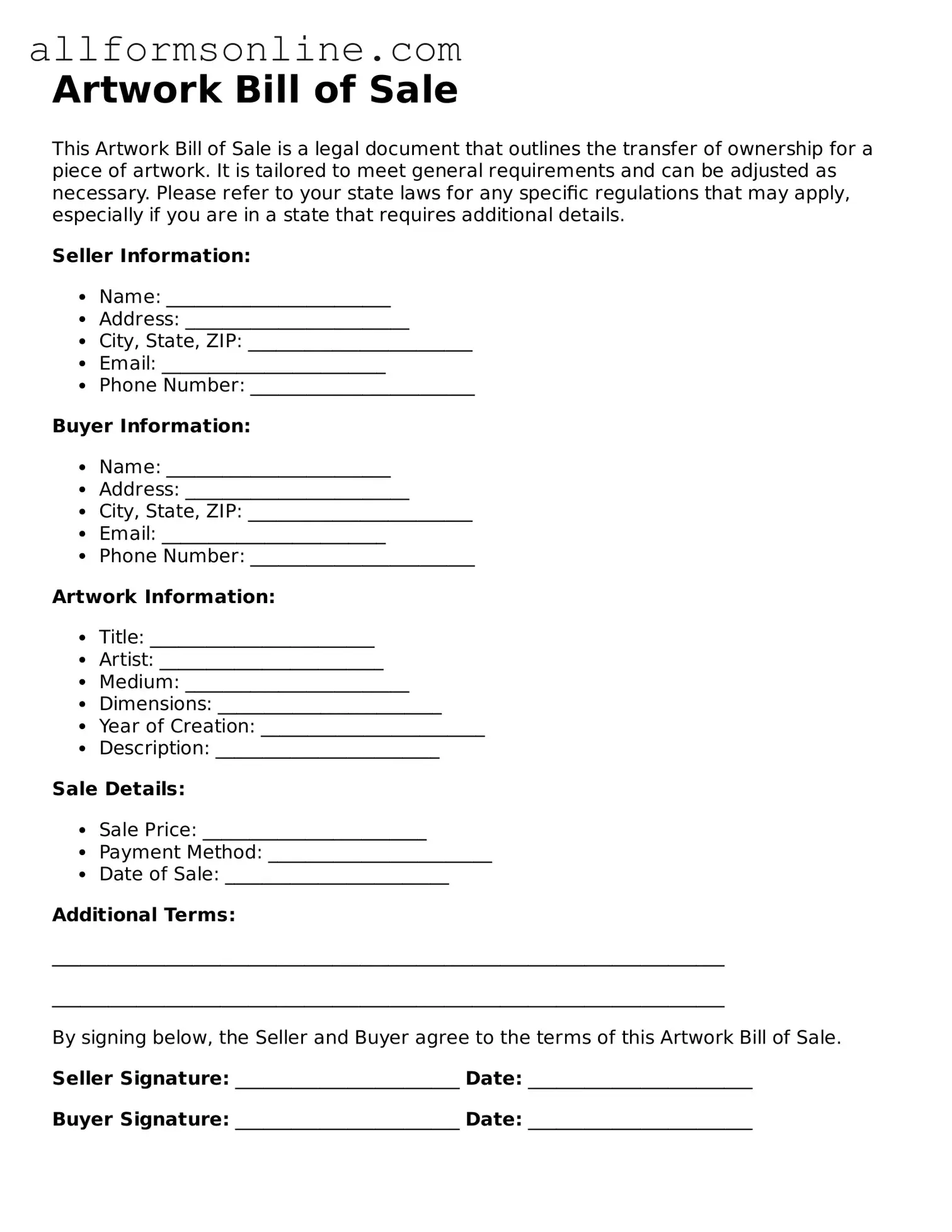What is an Artwork Bill of Sale?
An Artwork Bill of Sale is a legal document that serves as proof of the transfer of ownership of a piece of artwork from one party to another. It details the specifics of the transaction, including the names of the buyer and seller, a description of the artwork, the sale price, and the date of the sale. This form is essential for both the buyer and seller, as it protects their rights and provides a record of the transaction.
Why is an Artwork Bill of Sale important?
This document is crucial for several reasons. First, it helps establish clear ownership, which is especially important for valuable or unique pieces of art. In case of any disputes, the Bill of Sale serves as evidence of the transaction. Additionally, it can be useful for tax purposes, as it may need to be presented when reporting capital gains or losses. Having a written record can also enhance the artwork's provenance, which is important for future sales or appraisals.
What information should be included in an Artwork Bill of Sale?
An effective Artwork Bill of Sale should include specific details to ensure clarity and legality. Key information includes the names and contact information of both the buyer and seller, a detailed description of the artwork (such as title, artist, medium, dimensions, and any distinguishing features), the sale price, and the date of the transaction. It is also advisable to include terms regarding any warranties or representations made about the artwork, as well as signatures from both parties to validate the agreement.
Can an Artwork Bill of Sale be modified after it is signed?
